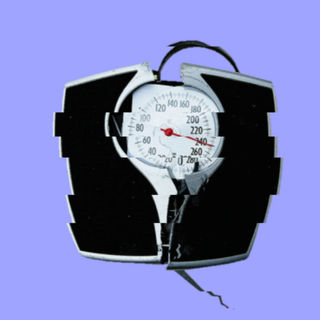
Dopamine Fasting Is Gaining Fans — Without Much Basis in Science
The ascetic trend out of Silicon Valley is an attempt to manipulate our brains’ pleasure centers — but not a particularly effective one.

The Silicon Valley techies who brought us apps that hijack our brains’ pleasure centers in order to keep us coming back from more — think, Facebook’s now-defunct newsfeed, Candy Crush, Instagram — are fighting the monster they created by creating a new fad: dopamine fasting.
Dopamine fasting involves temporarily abstaining from all pleasureful and/or interesting experiences that release dopamine in the brain. Dopamine, popularly known as the ‘happy hormone,’ really has more to do with motivation; it guides us in deciding what we devote effort to and expend energy on. It’s closely connected with addiction, and tech innovators have been pretty honest about crafting apps that tap into dopamine’s neural pathways, in order to keep users coming back for more.
But dopamine fasting goes far beyond simply giving up the very manipulative apps Silicon Valley created. It basically means living a temporary lifestyle of asceticism; according to Vox, the activities a dopamine faster might abstain from include (but are not limited to) sex, food, exercise, social media, video games, and talking — all of which are enjoyable, stimulating activities that release a healthy amount of dopamine in the body. Some fasters even shun eye contact and body movement as much as possible. The idea is these activities in and of themselves are fine, but when combined with tech use, we’re kept in a permanent state of hyperarousal and dopamine overload — hence the need to cut off and reset.
Dopamine fasters who have been profiled in the New York Times and in Business Insider say they feel more focused, more in control of emotions, and appreciative of favorite activities after a fast.
The only problem? The term is scientifically inaccurate, and the practice doesn’t work — especially not as a long-term solution to overstimulation from technology.
Related on The Swaddle:
The Thing that Drew Me to Social Media Also Led Me to Quit It
First and foremost — there’s no way to actually shut down dopamine’s release in the brain, nor should one try.
“… if you were actually to fast from dopamine it would probably be fatal,” Michael Treadway, PhD, a clinical psychologist and neuroscientist at Emory University, told Live Science.
That’s because dopamine isn’t really about pleasure, and motivation is just a small part of what it does. Treadway explains that dopamine is rather like a “switchboard” that prompts different parts of the brain to react to information and stimuli; it determines what we give attention to and how much, what we devote energy to and how much — including basic body movement. Some of this determination is based on how much reward we expect from the activity: Dopamine surges when we anticipate a reward, and again when the reward is received. Addictive substances hijack this function, and newer technologies tap into it — by use of notifications, for instance, or like functions.
According to addiction experts, for people addicted to drugs, the surges of dopamine are followed by lows that ultimately lead the brain to become more and more resistant to the effects of the hormone, requiring bigger and bigger surges (engendered from larger and larger drug doses) for the same effect. For this reason, many addiction treatment plans call for a complete detox or abstinence period, to reset this effect, reports LiveScience. This effect is frequently cited by dopamine fasters.
“We’re addicted to dopamine,” James Sinka, a dopamine fasting enthusiast, told the New York Times. “And because we’re getting so much of it all the time, we end up just wanting more and more, so activities that used to be pleasurable now aren’t. Frequent stimulation of dopamine gets the brain’s baseline higher.”
But it’s never been conclusively proven that technology use hardens the brain to dopamine’s effects. Technology use induces a dopamine response on par with any normal, enjoyable experience — roughly a 50% to 100% increase, Christopher J. Ferguson, PhD, a professor of psychology at Stetson Univerisity, writes for The Conversation. By contrast, cocaine and methamphetamine — two highly addictive drugs — cause a dopamine spike of 350% and 1200% respectively. In addition, Ferguson points out, dopamine receptors themselves — the cells in the brain activated in different ways by dopamine’s release — respond differently to tech use than they do to substance abuse, with no evidence that they become less sensitive to dopamine with frequent tech use, in the way they do with substance abuse.
What a so-called dopamine fast really is, then, is simply an attempt to unplug from the overstimulation of a modern, tech-filled world. And there is evidence of benefits from that, even if they’re not at the neurotransmitter level. A dopamine fast by any other name could be termed a DIY extreme meditation. Mindful meditation has been linked to a host of benefits, even if research into them is so nascent they aren’t conclusively proven yet.
But there is a slight difference. Meditative practices usually encourage and facilitate a level of self-reflection. Dopamine fasting is simply the elimination of distractions — without the prompt to look inward. While that reflection may result for some, it may not for all. For the former, it may have benefits similar to meditation — “The kind of practice at self-control that one engages in, in doing one of these fasts, can be useful — if only just to give you a feeling of mastery over your own behavior,” Russell Poldrack, a neuroscientist at Stanford University, told Business Insider.
But broadly speaking, with dopamine fasting, such a feeling is fleeting. Temporary, even repeated, abstention from pleasurable activities won’t lead to any kind of sustainable, long-term correction of tech overuse or other problematic behavior.
“As we go throughout the world, our brain is always changing,” Poldrack said. “I don’t think there’s any sort of special way in which a stimulation fast is going to change your brain.”
For a dopamine, or stimulation, fast to really work, it would need to be followed up with professional therapy that can help fasters actually reduce problematic tech use to a manageable point — when such an extreme step as a fast becomes unnecessary, experts say.
Ultimately, “I don’t think it’s realistic, and I’m not even sure it’s healthy” to completely cut out enjoyable or even basic activities, Dr. David Greenfield, an assistant clinical professor of psychiatry at the University of Connecticut School of Medicine, told Live Science. “I am not familiar with any programs that advocate for that, and that’s certainly not within the realm of typical medical treatment.”
Liesl Goecker is The Swaddle's managing editor.
Related


Snoring Is Not Just a Bedtime Annoyance, But a Risk Factor for Future Heart Problems
